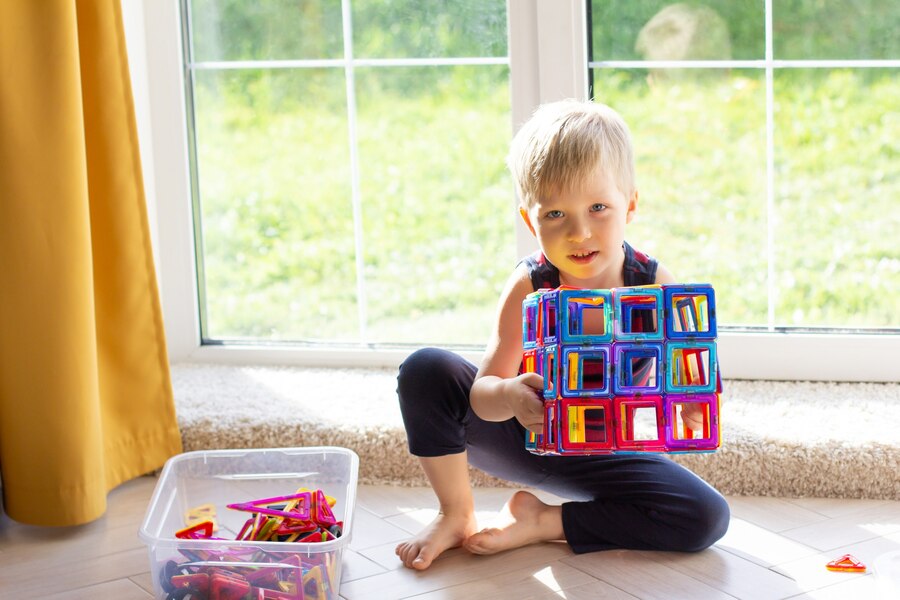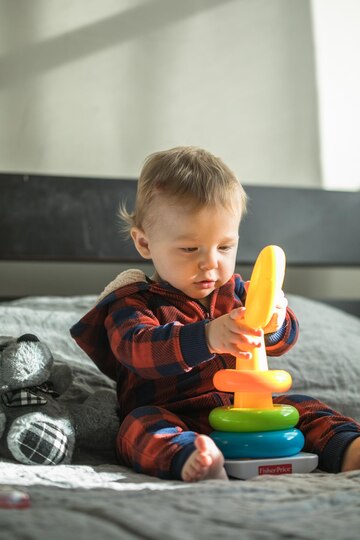
Imagine a world where every playtime moment helps shape your child’s future. For parents of 2-year-olds, educational toys offer just that—an enriching mix of fun and foundational learning. These little tools of wonder are more than just toys; they are pivotal in nurturing your toddler’s cognitive, motor, and social skills. But how do you choose the best ones? This guide will walk you through the importance of educational toys, what to look for, and where to find the best options to support your child’s early childhood development.
Two-year-olds are at an exciting stage of development. They are eager explorers, curious about everything around them. This age is marked by significant milestones like improved motor skills, budding language abilities, and the beginning of social interactions.
At two years old, children start to develop more refined motor skills. They can stack blocks, turn pages in a book, and even start to scribble. Their cognitive skills are also rapidly evolving; they’re beginning to understand cause and effect and can follow simple instructions. Socially, they are learning to play with others and are beginning to express a wider range of emotions.
Educational toys play an instrumental role in supporting these milestones. Toys designed for 2-year-olds often focus on enhancing fine and gross motor skills, encouraging problem-solving abilities, and fostering social interactions. A well-chosen toy can stimulate multiple areas of development simultaneously, making playtime both enjoyable and beneficial.
The market is brimming with various types of educational toys, each designed to target different aspects of development. Here’s a breakdown of some popular categories and their benefits.
Sensory toys are designed to engage a child’s senses—sight, sound, touch, and even smell. These toys can include textured balls, musical instruments, and colorful lights. Sensory play is crucial for 2-year-olds as it helps them process and understand the world around them.
Building blocks are classic educational toys that never go out of style. They help improve fine motor skills, hand-eye coordination, and spatial awareness. Additionally, building blocks encourage creativity and problem-solving as children learn to stack, balance, and create structures.
Puzzles are excellent for developing cognitive skills. Simple wooden puzzles with large pieces are perfect for 2-year-olds. They teach problem-solving, shape recognition, and improve fine motor skills as children manipulate the pieces to fit them together.
Interactive books with flaps, textures, and sounds can captivate a 2-year-old’s attention while introducing them to the joys of reading. These books encourage language development, improve listening skills, and enhance cognitive abilities as children learn new words and concepts.
Selecting the perfect educational toy involves more than just picking the first colorful item you see. Here are some factors to consider to ensure you make the best choice for your child.
Safety should always be a priority. Look for toys made from non-toxic materials and ensure there are no small parts that could pose a choking hazard. Always check the manufacturer’s age recommendations and read reviews from other parents.
Choose toys that are appropriate for your child’s developmental stage. A toy that is too advanced may frustrate them, while one that is too simple won’t hold their interest. Look for toys that challenge your child just enough to be engaging but not overwhelming.
Opt for toys that will grow with your child. Versatile toys that can be used in multiple ways or that become progressively challenging can provide longer-lasting value. For example, building blocks can be used to create simple towers now and more complex structures as your child grows.

Educational toys offer a plethora of benefits that extend beyond mere entertainment. Let’s explore some of the key developmental advantages they bring to the table.
Educational toys stimulate a child’s brain, encouraging them to think critically and solve problems. Puzzles, building blocks, and interactive books all contribute to improving cognitive abilities such as memory, attention, and reasoning.
From stacking blocks to fitting puzzle pieces, educational toys enhance both fine and gross motor skills. Activities that require precise hand movements help improve dexterity, while those involving larger actions boost overall coordination.
Many educational toys are designed to be interactive, encouraging children to play with others. This collaborative play helps develop social skills like sharing, taking turns, and communicating effectively. Role-playing sets and cooperative games are particularly beneficial in this regard.
Numerous studies and testimonials support the benefits of educational toys. For instance, a study published in the journal Early Childhood Education found that play with educational toys significantly improved children’s problem-solving skills. Parents like Sarah from New York have also shared their positive experiences, noting how educational toys have helped their children become more confident and engaged learners.
With so many options available, finding quality educational toys can be daunting. Here are some trusted brands and retailers to get you started.
Brands like Melissa & Doug, Fisher-Price, and VTech are renowned for their educational toys. These companies have a long-standing reputation for producing high-quality, safe, and developmentally appropriate toys.
Shopping online offers a vast selection of educational toys. Websites like Amazon, Target, and Toys “R” Us provide detailed product descriptions, customer reviews, and competitive pricing. Always check for certifications and safety standards before making a purchase.
If you prefer to shop in-store, specialty toy stores and department stores often have dedicated sections for educational toys. This allows you to see and feel the products before buying, ensuring they meet your standards for quality and safety.
Educational toys are more than just playthings; they are essential tools for nurturing your child’s development. By understanding the needs of 2-year-olds, choosing the right types of toys, and considering key factors like safety and developmental appropriateness, you can make informed decisions that benefit your child. Remember, the goal is to make playtime both fun and educational.
It is a long established fact that a reader will be distracted by the readable content of a page when looking at its layout. The point of using Lorem Ipsum is that it has a more-or-less normal distribution
contact us : laynmade5@gmail.com